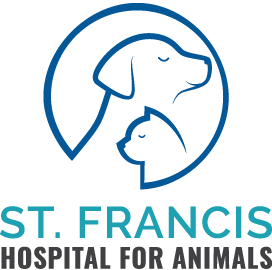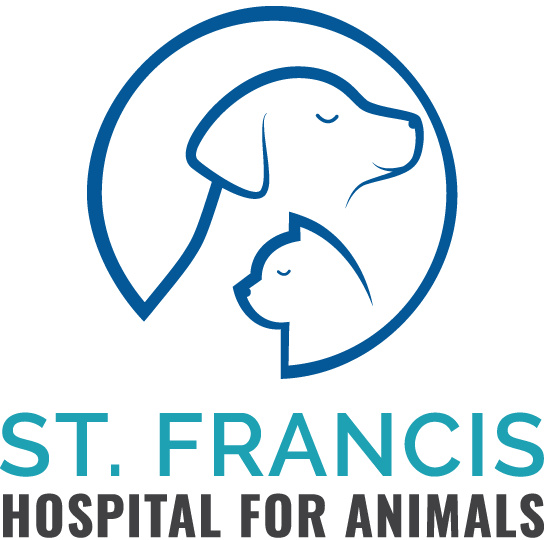Dental disease is the most common disease in companion animals and affects all breeds of cats and dogs. There are methods of prevention, and care that are similar to that in humans. There are also differences in the methods that are used for dental cleaning, all of which I will discuss in this article.
Dental disease is any pathology that presents in the mouth. It can be subtle to dramatic in effect. The simplest example is tartar, which can range from mild to severe. Much of tartar consists of bacteria, which is a normal inhabitants of the mouth, but excess bacteria can cause a bad smell, gum inflammation, tooth loosening, or worse. Gum inflammation, also known as gingivitis, can be caused by excess tartar, bacteria, growth in the mouth, or immune-mediated disease. It can be in one area in the mouth or generalized, depending on the cause and severity of the disease. Having excess tartar or gingivitis in the mouth can lead to disease around the roots of the teeth, causing erosion of the bone around the teeth, or causing erosion of the roots themselves. This in turn can lead to the loosening of the teeth or defects in the jaw of an animal. Other diseases include oral tumors, gum overgrowth, and stomatitis (generalized gum inflammation).
Prevention is important in preventing dental disease in many animals. Brushing teeth, if practical, can be effective in preventing tartar buildup in the mouth. You may be saying to yourself, “There’s no way I can brush Fluffy’s teeth”. It may be possible! First of all, give it a try! With some dogs, it can be simple, but others do not like handling around their mouth, or may not stay still. You may be able to build up to it by at first just touching around the mouth to get them used to it. Then, placing your fingers in the mouth and rubbing their teeth may make them even more comfortable. If you are able, then introduce a regular toothbrush or a finger brush to clean the teeth. There is animal toothpaste that is designed so that the pet can swallow it with no safety issues. Brushing with or without toothpaste can be effective in preventing tartar. It can be possible with cats if they are very docile, but there are other ways you can try to prevent dental disease as well. Food or food additives are designed to prevent periodontal problems. Examples are Perio Powder, a powder additive that is added to meals, prescription dental diets, or chlorhexidine oral rinse (an antibacterial mouthwash). Tooth brushing is considered the best way to prevent dental disease, followed by other methods. If you are able to do one or multiple methods of dental care for your pet, it can be helpful for keeping his or her mouth healthy.
In some animals, prevention is not enough to keep the oral disease from developing. Dental cleaning is an important procedure that we perform regularly to clean teeth, identify problems, prevent tooth loss, extract teeth, or remove excess gum tissue and/or growths in the mouth. Dental x-rays are done to evaluate the roots of the teeth, because often pathology develops underneath the gum line, and is not visible on gross inspection of the mouth. General anesthesia is necessary to perform an effective dental procedure because the patient is immobile and is less sensitive to pain when asleep. A common concern for pet owners is anesthesia, having fear about their animal having a problem during or after anesthesia. At St. Francis Hospital for Animals, we always make sure that the patient is otherwise healthy for an anesthetic episode by way of a physical exam and pre-anesthetic lab work. If there is any concern or problem that is identified prior to the dental procedure, we make sure that is addressed first. Another common concern is about older pets that are going under anesthesia. First of all, age is NOT a disease! Again, we make sure the older dog or cat is healthy prior to an anesthetic episode. If there is a concern about the heart, it will be addressed prior to undergoing the procedure. It may be more necessary for an older animal to have a dental cleaning because they can have the worse oral disease than a younger patient. Removing the pathology from the mouth can be an immediate relief to the dog or cat because it removes the pain involved with loose teeth or gingivitis. Also, pain relief is always a part of the anesthetic protocol, and medication may be sent home with the animal after the procedure is done.
Other specific concerns in dental health are as follows: Small and toy breed dogs present with the oral disease more often due to the way the teeth develop in the mouth. They tend to grow tartar quickly, at a younger age and may have abnormalities like crowding of teeth or malocclusion (abnormal bite pattern). They may need more dental cleanings during their lifetimes because of this prevalence. If teeth are extracted during the procedures, it may be an immediate relief to the animal and better in the long term because a problem should not return due to the absence of the tooth. Dogs and cats do very well without their teeth, and should not have problems eating (even dry food). Stomatitis (generalized mouth inflammation) in cats can be a significant problem. This is usually caused by an immune-mediated reaction to the roots of the teeth. The underlying cause of the disease can be the feline leukemia virus, FIV, or maybe unknown. Stomatitis can range from mild redness around all of the teeth to a severe crimson color in the mouth and excess gum tissue due to inflammation. Methods of relief for stomatitis are antibiotics, steroids, or in very exceptionally good cats, a special mouthwash to reduce pain and redness. The only effective method to cure stomatitis is the removal of all or most of the teeth. Removing the teeth and possibly excess tissue provides immediate relief and extends the life of the cat because it removes the inflammation and bacteria growth that would be present throughout that cat’s lifetime.
During the month of February, at St. Francis, we are having a discount of 10% on dental cleanings for the month. They are very important for your pet’s health! If you have any questions about your furry friend’s teeth or think they need to be evaluated, please give us a call or ask at your next appointment.
Dr. Jaime Kozelka
St. Francis Hospital for Animals



